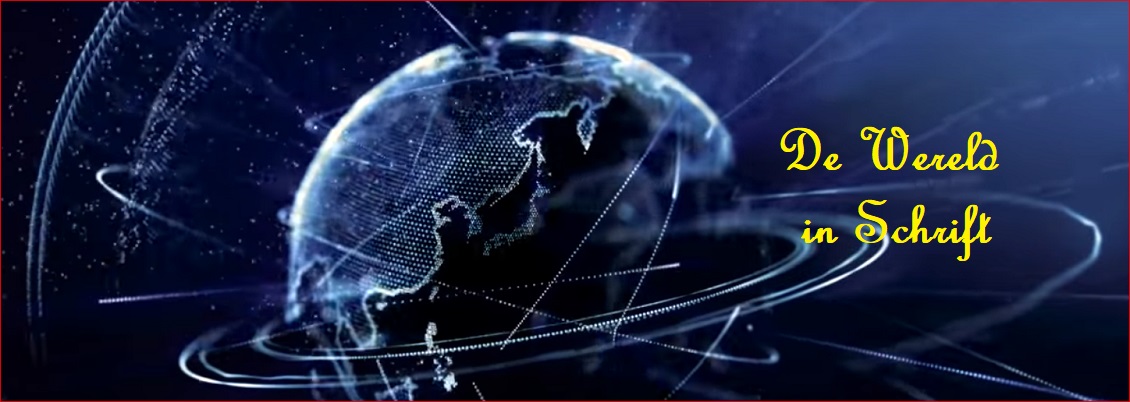Businesses have tended to leave the question of how the monetary system works to the government, central banks, and the banking system. Yet in doing so they miss the opportunity to solve key monetary and financial problems that cause real heartburn in times of economic downturn—leading to layoffs, bankruptcies, and cascading economic crises.
Belgian banking and currency expert Bernard Lietaer and community developer Gwendolyn Hallsmith present some of their stimulating ideas on how to re-engineer our monetary systems for the sustainability revolution.
When credit lines get prohibitively expensive or are pulled back, as is the case today, the jobs evaporate.
The Commercial Credit Circuit (C3)—provides critical working capital for small- and medium-sized businesses which can protect themselves from economic downturns and financial instability by taking a small part of the monetary system into their own hands. It represents a substantial improvement on commercial barter by making its business-to-business (B2B) currency convertible into official national currency.
When money is not available at all, an old option has been barter. Barter is one of the oldest exchange mechanisms in history. It is an exchange of goods or services without any standard medium of exchange. “Commercial barter” clubs or businesses typically use an internal currency as a standard medium of exchange, and so calling this “barter” is technically a misnomer.
Like individuals, businesses, too, can have a cash-flow shortage but a surplus of goods. But old-fashioned barter isn’t convenient when one tries to pay in corn, or pigs, or saddle shoes. And doing so might limit what a business can purchase, because a barter exchange requires that the needs and resources of two parties match.
The process starts when one participating small- or medium-sized business gets insurance on an invoice or other payment claim. This insured invoice is then used to back a complementary currency—let’s call it BusinessBucks—issued through a computerized transaction for the same amount as the invoice. The BusinessBucks are then used as liquid payment instruments within a business-to-business network. Each recipient of BusinessBucks can either cash them in for dollars, euros, yen, pesos—the conventional bank debt money—at the cost of paying the interest to the point the invoice matures, or the recipient can pass the BusinessBucks on, without cost, to pay its own suppliers. At the maturity date for the invoice, the corresponding amount gets paid in conventional money, either by the company to which the invoice was originally issued or, in case of default, by the insurance company that insured that invoice. Also, at the maturity date, all the BusinessBucks that were created on the basis of that invoice become convertible to conventional money at no interest cost.
This process injects working capital into the C3 members’ network at a substantially lower cost than what would otherwise be possible because the insurance costs less on an aggregate level than compounding interest from bank loans in a conventional credit system (in Uruguay, the insurance cost amounts to 1 percent of the invoice). Given that small- and medium-sized firms provide the vast majority of all private jobs, the C3 mechanism systemically contributes to the stability of employment and of the entire economy.
Continue reading: Making Money for Business: Currencies, Profit, and Long-Term Thinking By Bernard Lietaer, Gwendolyn Hallsmith

The Terra is designed as a complementary currency operating in parallel with conventional currencies like the dollar, euro, and yen. It would not replace them but rather would supplement their use with another trading mechanism that has a different structure.
++
Related articles
- Making Money for Business: Currencies, Profit, and Long-Term Thinking (3eintelligence.wordpress.com)
- How Alternative Currencies Can Help Save the Planet (Video) (treehugger.com)
More and more economists are arguing that it’s time to do away with the growth imperative in order to curb needless consumption, and to instead seek alternatives that allow for more stable, sustainable economies. Some, like Gwendolyn Hallsmith, the co-author of ‘Creating Wealth’, argue that we need to seek alternative currencies, alternative ways of exchanging capital that discourage hoarding, excess production, and boundless growth. - Bartering Can Give a Big Boost to a Small Business (community.constantcontact.com)
Imagine getting one year of rent for free? “No way,” you say! Too good to be true? Well, it’s absolutely possible.
+
you need to make sure you utilize the bartered goods for items that will truly benefit your business.
+
A barter exchange must be accounted for in your bookkeeping records. You must record the income and expenses at the fair market value, just as you would in a cash transaction. - Managing cash flow – a guide for small business (premierlinedirect.co.uk)
Ideally, any business should have a constant inflow of cash that exceeds its outflow, but this is not always possible and most businesses will have dips and troughs, which is where the cashflow problems can begin.So, how can a small business improve cashflow management? Here are 12 suggestions, all of which can probably be adopted by any type of business. - How to Barter, Give, and Get Stuff (shareable.net)
there is a growing and exciting world of barter, work exchange, gift circles, mutual aid societies, time banks, local currencies, and other modes of transacting that don’t use regular money. These transactions form a huge component of the “sharing economy,” the “third economy,” the “sustainable economy,” or whatever you may call this “new economy.” - A Restaurant That’s Bartering Through the Recession (foodforfuture.wordpress.com)
Richard Wohn, the owner of Fireside Restaurant and Lounge on the northwest side of the city, has kept up a steady stream of customers who pay through bartering. Wohn told WBEZ he estimates about five to 10 percent of his business is the result of bartering, an average of about five tables a night. - If You Want To Prepare for a Barter Economy (lewrockwell.com)
As the Greek economy succumbs to the debt crisis and individual Greeks are made poorer each day through austerity measures and job cuts, many have begun resorting to traditional bartering as a way to make ends meet and at the same time increase their involvement with neighbors and their general community. - How NOT to Barter (tripbase.com)
In many countries haggling or bartering is the norm so vendors will often state their prices higher than the actual value.Even if you don’t feel comfortable negotiating over prices, if you don’t learn some basic bartering lessons, you’ll end up paying much more than you should!Here are 12 things you should most definitely NOT do when bartering: - The Barter Starter Legal Guide (shareable.net)
In part one of this series, “How to Barter, Give, and Get Stuff,” attorney Janelle Orsi explores the legal ramifications of “third economy” transactions that happen without money, through barter, gifting, time banks, and other creative means. In part two, she delves more deeply into the nuts and bolts of the gift economy. Now in part three, Janelle tells you how to start bartering.
+
Barter, time banks, and other forms of exchange can jump start our economy in new ways – ways that make more efficient use of underused skills and assets, that provide work opportunities for the underemployed, and that enable all of us to get our needs met.
+
An agreement for barter should at least include:- The timeframe for getting things done;
- A detailed description of what will be done or exchanged, the quality and scope of the work, and what constitutes a job well done;
- Whether there’s an upper limit of the number of hours each person will put in on the project;
- For tax purposes, what value will you assign for the services; and
- What happens if one person fulfills their end of the barter agreement, but the other person does not? How will the person who did their work be compensated for their time? In regular money, and, if so, how much?
- Frugal Friday | Bartering (mike10613.wordpress.com)
- Buy, Sell, Swap, Meet, Barter, and Negotiate For Free(angelbabe432.wordpress.com)

SwapAce allows you to SWAP, SELL, BUY & MEET.
- Guest Post: The Greatest Short – Why All Correlations Are Moving To 1 (zerohedge.com)
The entire fractional reserve banking system rests on the premise that the short currency long assets/loans trade works, by creating a future economy that provides real greater output to sustain the circulated currency, because expunging it through deleveraging is a dangerous process for bank balance sheets and a deflationary event. The great question at the present time is: Has the recent credit expansion provided the US or Europe with an economy which can sustain the currency stock in circulation with it’s accruing interest or has the malinvestment been so bad, that the currency amount in circulation is unsustainable and the resulting deflation will be met by central bank debt forgiveness to the currency shorters. - Towards a multi-polar international monetary system (rightways.wordpress.com)
- Renewed calls for the development of the banking system of public and private (thecurrencynewshound.com)
- New ECB chief Draghi faces tussle over bank’s role (seattletimes.nwsource.com)
- Joint letter from Herman Van Rompuy and Jose Manuel Barroso to G20: in full (telegraph.co.uk)
Restoring growth and tackling global macroeconomic imbalances. + Making tangible progress on implementing the financial market reform agenda.+ Making the International Monetary System more resilient. + Boosting trade as the most effective way to support global growth. + Enhancing the social dimension of globalisation. + Ensuring Food Security and Promoting the G20 Development Agenda and Innovative Financing. We need to address the global food security challenge by fully endorsing the Action Plan on Food Price Volatility and Agriculture agreed by G20 Agriculture Ministers. + The G20 needs to tackle further the global climate and energy challenge and continue its fight against corruption. - Schäuble calls for EU lead on Tobin tax (europebiz.wordpress.com)

Wolfgang Schäuble, Germany’s finance minister, wants the European Union to take the global lead in introducing a financial transaction tax to curb speculative trading, along with tougher regulation of big banks and the “shadow” banking sector, such as hedge funds.If the UK blocked agreement on such a tax in the full EU, he said in an interview with the Financial Times, the eurozone should press ahead on its own. - Maximum Intervention to take us to Crisis 2.0 (tradingfloor.com)
At no point have we come closer to “moving on”, where we stop dealing with past mistakes and move towards new measures for securing the jobs and growth needed for getting ourselves out of this debt crisis. Only through activating the ‘lost generation’ of youth across Europe will we have the dynamic societies enabled to implement lasting structural changes. - G-20 summit faces hefty agenda (marketwatch.com)
This week’s summit of the Group of 20 leaders in Cannes, France, faces a hefty agenda, including issues like restoring global growth and redressing economic distortions, implementing the Continent’s recently agreed Greek-debt and banking-recapitalization plan and ensuring food supplies
+++
































 Biblestudents – Bijbelstudenten
Biblestudents – Bijbelstudenten 0 + Bloggers for Peace
0 + Bloggers for Peace Free Christadelphian Ecclesia
Free Christadelphian Ecclesia Hoop tot Leven – Redding in Christus
Hoop tot Leven – Redding in Christus Vrije Broeders in Christus (Free Flemish Christadelphians on Wordpress)
Vrije Broeders in Christus (Free Flemish Christadelphians on Wordpress)














